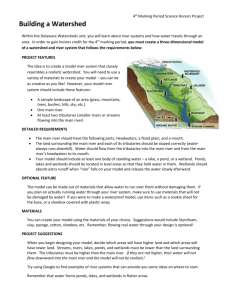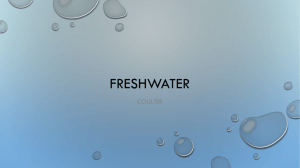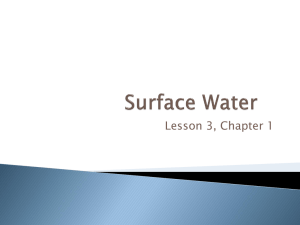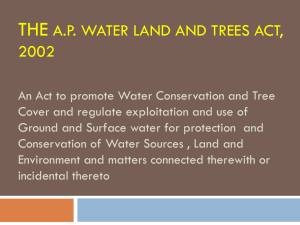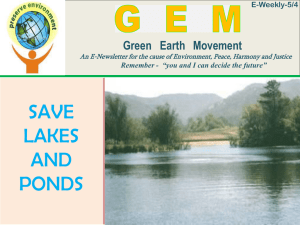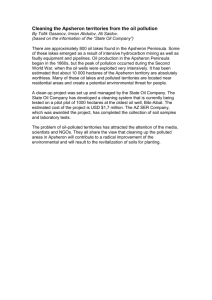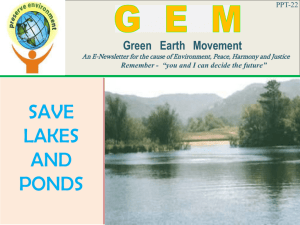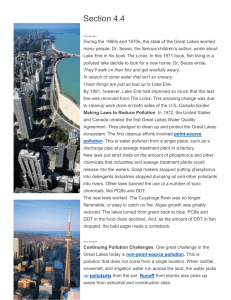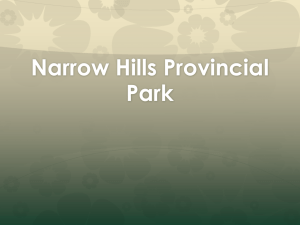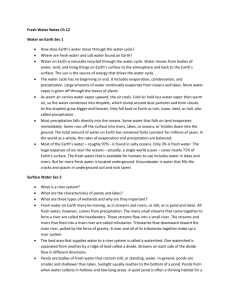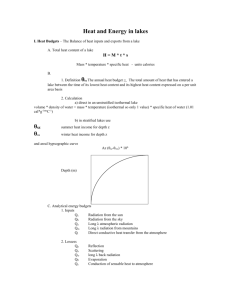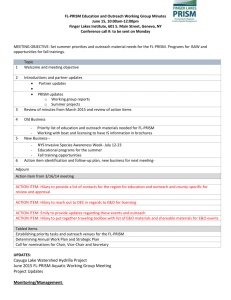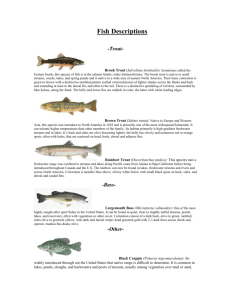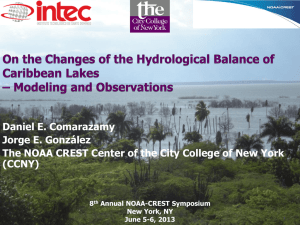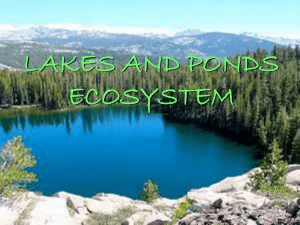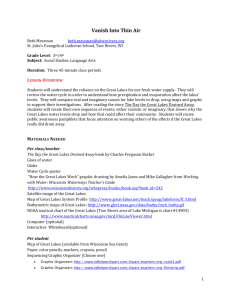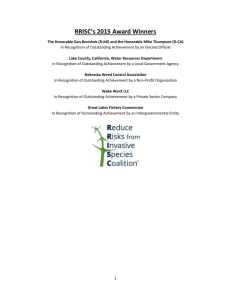Surface Water:
advertisement
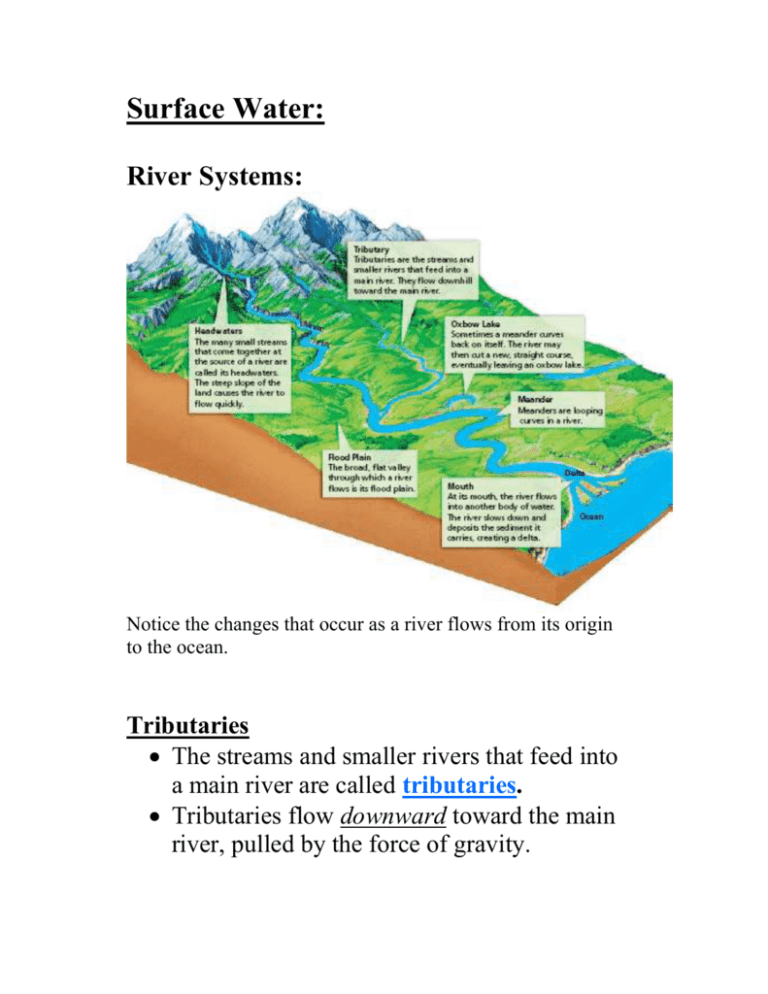
Surface Water: River Systems: Notice the changes that occur as a river flows from its origin to the ocean. Tributaries The streams and smaller rivers that feed into a main river are called tributaries. Tributaries flow downward toward the main river, pulled by the force of gravity. A river and all its tributaries together make up a river system. Watersheds Just as all the water in a bathtub flows toward the drain, all the water in a river system drains into a main river. The land area that supplies water to a river system is called a watershed (river basin). *We live in the Yadkin-Peedee river basin! This map shows watersheds of several large rivers in the continental United States. Each river’s watershed consists of the region drained by the river and all its tributaries. Divides One watershed/river basin is separated from another by a ridge of land called a divide. Streams on each side of the divide flow in different directions. The Appalachian Mountains in NC are the eastern continental divide. The Nile River in Africa flows from south to north. What can you infer about the slope of the land through which the Nile River flows? Ponds and Lakes Ponds and lakes are bodies of fresh water. Unlike the moving water in streams and rivers, ponds and lakes contain still, or standing water Pond vs. Lake: o Ponds are smaller and shallower than lakes. o Sunlight usually reaches to the bottom of all parts of a pond. Most lakes have areas where the water is too deep for sunlight to reach the bottom. Ponds and lakes form when water collects in hollows and low-lying areas of land. o The water comes from precipitation, runoff from higher areas, and/or are fed by a river. Lake Formation: Lakes and ponds form when water collects in hollows and low-lying areas of land. A river channel, for example, can form a lake as it changes over time - It bends and loops as it encounters obstacles in its path. - Eventually, a new channel might form, cutting off a loop. The cut-off loop may become an oxbow lake. ∙ Some other natural lakes, such as the Great Lakes, formed in depressions created by ice sheets that melted at the end of the Ice Age. ∙ People can also create a lake by building a dam across a river. The lake may be used for supplying drinking water, for irrigating fields, and for recreation. A lake that stores water for human use is called a reservoir. How Lakes can Change Nutrients are substances such as nitrogen and phosphorus that enable plants and algae to grow. Long Term Changes: Over many years, the nutrients build up in the lake in a process called eutrophication . As eutrophication causes more algae to grow, a thick, green scum forms on the surface of the water, also called an algal bloom. Wetlands: A wetland is a land area that is covered with water some or all of the year. There are 3 types of wetlands: marshes, swamps, and bogs - Marshes = grassy covered by shallow water (estuary) - Swamps = look like flooded forests with trees in the water - Bogs = acidic water, lots of mosses Importance of Wetlands: Wetlands provide sheltered waters and a rich supply of nutrients for many living things. They also can help control floods by absorbing extra runoff from heavy rains. Threats: The wetlands are threatened by agriculture and development. The Everglades in Florida are shrinking due to land development. Surface Water Review Questions: 1. What bodies of water make up a river system? River and tributaries. 2. How is a watershed related to a river system? A watershed is the land area that supplies water to a river system, where all the water drains. 3. How are lakes different from ponds? Lakes are larger and deeper than ponds. Sunlight reaches the bottom of a pond; in a lake, sunlight cannot penetrate the bottom. 4. List two ways lakes and ponds form. Water collecting in hollows and/ or lowlying areas of land, depressions created by ice sheets, building of a dam. 5. What is the main difference between a reservoir and most other lakes? A reservoir is man-made. Other types of lakes form naturally. 6. What are the 3 types of Wetlands? Marshes, swamps, and bogs
